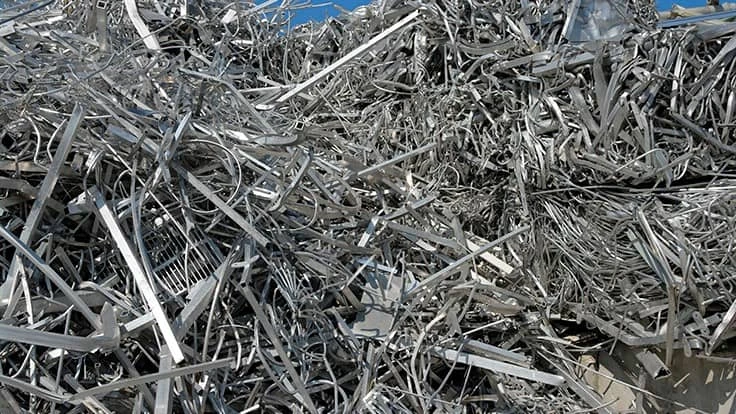
istockphoto.com
As we slowly emerge from the pandemic, aluminum markets have rebounded from this time last year, with signs of further recovery on the horizon, said Lauren Wilk, vice president, government relations & international programs, with the Aluminum Association, Arlington, Virginia.
Wilk was joined by Reuters columnist Andy Home during the ISRI2021 Aluminum Spotlight: A Better Year for Aluminum Markets?, which was April 28. ISRI2021, the Institute of Scrap Recycling Industries (ISRI) annual convention and exposition, was held virtually April 20-22 and April 27-29.
Home said China’s primary aluminum capacity stood at less than 3 million metric tons in 2000. But, by the end of 2020, the country’s production grew to 37.3 million metric tons, which was 57 percent of global aluminum production.
The country’s semifabricated aluminum imports also surged during that time from 27,000 metric tons in 2004 to 4.6 million metric tons in 2020. “I would suggest that this has really shaped the political landscape around our industry,” Home said. “Without an international agreement on what to do with China, it’s no surprise that we have seen a proliferation of trade barriers being erected.”
Home said the U.S. was no longer trying to stem the flow of Chinese material but the flow of material from other countries that has been displaced by Chinese material.
“This extraordinary growth of China’s aluminum capacity has been the overriding theme of the last 20 years,” he added, saying it has determined the political, trading and pricing landscape in the aluminum industry.
“What would you say if I told you everything was about to change,” Home asked attendees, adding that he believed the “Chinese aluminum juggernaut was about to run out of road.”
He said this is in part because the Chinese government has capped national aluminum production capacity at 45 million metric tons per year and has deemed 3 million metric tons of capacity “illegal” and inoperable because it was built without authorization from the Chinese government.
“We are starting to see Chinese production hit that local de facto ceiling,” Home said.
In the past, Home said he would have expected that capacity ceiling to be raised. “Not this time around,” he said, citing President Xi Jinping’s commitment to reach carbon neutrality by 2060. Home described this as an “existential threat” to many Chinese smelters, which use coal to power their furnaces. Home added that some smelters have transferred plants to the hydro-rich Yunnan province, though he said the country’s green power capacity is limited.
“The evidence of this new tension is there in China’s trade,” Home said. “The world’s biggest producer seems to be short of metal,” he said, citing China’s imports of primary aluminum and aluminum alloy. Home said the country has imported 1.3 million metric tons of primary aluminum and 1.1 million metric tons of aluminum alloy since January 2020 through March of this year.
“This changes the entire landscape, I would suggest, of the global aluminum market.”
Asian locations account for 90 percent of London Metal Exchange (LME) registered on-warrant stocks, 86 percent of LME “shadow” off-warrant stocks and 22 percent of CME stocks, Home said.
“This is bad news for buyers everywhere else,” he added, citing rising global aluminum premiums and shipping disruptions that are making other importing countries more vulnerable.
Wilk said U.S. aluminum demand increased from 2009 through 2020, having peaked at 28.1 billion pounds in 2018. While aluminum demand likely contracted to 24.5 billion pounds in 2020 from 27.6 billion pounds in 2019, it was still 30 percent higher than it was in 2009.
She pointed to a number of market trends that have benefited aluminum, including shifting consumer preferences for beverage cans that saw can sheet shipments increase 3.3 percent in 2020; the move toward electric vehicles and increased fuel economy that will intensify light-weighting demands in the transportation sector; renewed attention to the electrical grid that could lead to significant investments; and opportunities in renewables in the area of transmission as well as products, such as solar panel frames.
Wilk said the U.S., which relies heavily on secondary aluminum production rather than primary production, has the opportunity to produce more aluminum but doing so will rely on the collection of scrap and recycling.
Home added that the aluminum market has been carrying historically high stocks for some time, which offers some cushion. However, if we are going to see a sustained increase in demand as predicted, then the market has a considerable long-term supply challenge to overcome.
He said it was hard to see how recycling more alone can close the gap. “The world is going to need more primary aluminum capacity,” Home said. “I’m not sure we can rely on the assumption that China will build it."
Wilk said the industry will have to recycle a great deal more and produce more primary aluminum. “I hope the U.S. can contribute in both areas.”
Latest from Recycling Today
- European project yields recycled-content ABS
- ICM to host co-located events in Shanghai
- Astera runs into NIMBY concerns in Colorado
- ReMA opposes European efforts seeking export restrictions for recyclables
- Fresh Perspective: Raj Bagaria
- Saica announces plans for second US site
- Update: Novelis produces first aluminum coil made fully from recycled end-of-life automotive scrap
- Aimplas doubles online course offerings







